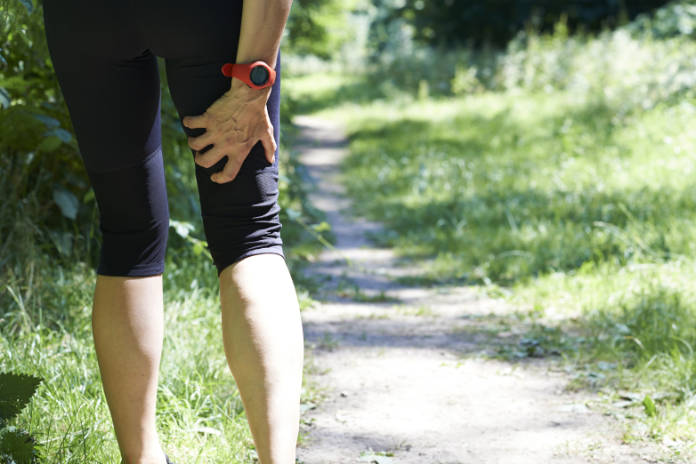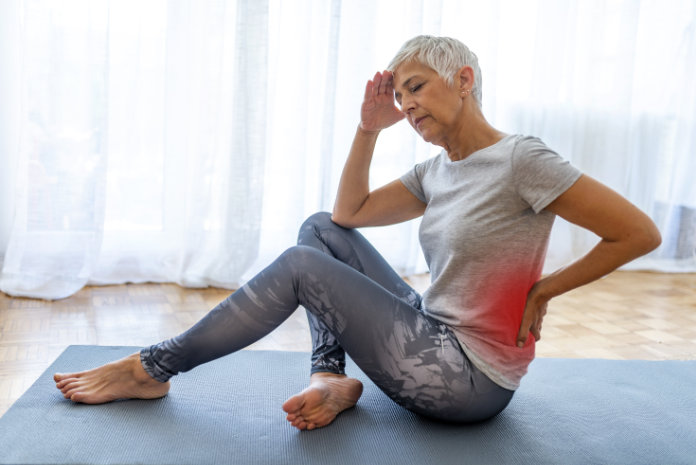If you’re one of those people who has never been able to touch your toes, you’ll understand what having tight hamstrings can be like – but what causes tight hamstrings and is it anything to worry about?
What are tight hamstrings?
Having tight hamstrings – one of the three posterior thigh muscles running between the hip and the knee – isn’t a sign of any serious health problems. But ignore it and you can set yourself up for injury, according to medical experts.
Dr Clare Morrison, GP at online doctor and pharmacy Med Express, explains: “Tight hamstrings are more prone to injury, particularly in those who fail to warm-up first, who are older, or fatigued. Activities often associated with hamstring damage include running, jumping and climbing.”
Read our guide to 3 resistance band leg exercises that help build strength in your legs.
What causes tight hamstrings?
Hamstrings can become tight for a number of reasons, with some causes easier to remedy than others. One common cause is a sedentary lifestyle: When seated, the hamstring muscles are relaxed and drawn in closer to your body. That means when you stand up after spending a long time sat down, you can get an uncomfortable feeling of tightness.

If you’re often on your feet but still experiencing tightness, the issue may be with your posture. Many people unknowingly curve their back when standing, meaning their stomach and buttocks are slightly pushed out. This can make the hamstrings overstretched resulting in tightness, in which case attempting to stretch them further would not be the best course of action.
Of course, when exercising it is important to stretch your hamstrings (before and after the workout), but they can still become tight by insufficient stretching of other muscles. Particularly, if the quadriceps (located in the front of your thighs) are left tight, this can result in your hamstrings being lengthened and consequentially becoming weaker.
The muscles in your body are always working in tandem with each other, and so discomfort in one area could very well be a symptom of a problem somewhere entirely different. Case in point: Problems in the hamstring muscles are often associated with pain in the lower back.
Read our guide to how different painkillers work and which ones are best for your pain?
How do tight hamstrings cause back pain?
Lower back pain is one of the most common ailments to come from tight hamstrings, and can be a huge problem, particularly for those who spend much of the working day sat down.

Morrison says: “Tight hamstrings are a well known cause of back pain. This is because the pull from these muscles, which form the bulk of muscle at the back of the thighs, causes the pelvis to tilt back, making the normal curve of the lower back become flattened.
“Without the normal inwards curve of the lower back, the ligaments and muscles in this area are put at a mechanical disadvantage, causing strain, inflammation and pain.”
How can tight hamstrings be treated?
Morrison adds: “Tight hamstrings can be rectified with regular exercises, designed to stretch them. Exercises are also important to ensure the correct posture for the pelvis and back.”

One stretching technique often used for the hamstrings is touching your toes, however, you can also stretch them lying down, gently pulling the affected leg slowly towards the chest by holding behind the thigh with both hands.
Remember, although it is normal to feel some mild discomfort while stretching, you should never stretch to the point where you’re in pain, as this can lead to injury.
Many jobs, particularly those in offices, make sitting down unavoidable, but try to take regular breaks to stand and walk around when possible. A stand-up desk, where you can raise your work surface at regular intervals and stand at your computer, is the ideal solution, although these aren’t an option in every workplace.
Staying mindful of how you stand can be an easy solution to this problem – the correct stance should involve a neutral pelvis, keeping your spine upright.
Meanwhile, focusing on related areas such as the quadriceps, hips and core muscles, can also help prevent tightness from developing. Try incorporating planks into your routine to strengthen your core, especially the abdominal muscles.
Massage therapy can help by relaxing tight muscles and improving flexibility.







































































